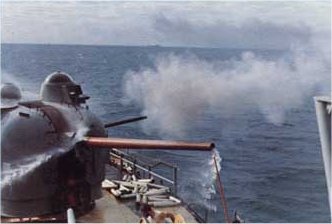 The Battle of Loc Ninh - 1972
The Battle of Loc Ninh - 1972
 The Battle of Loc Ninh - 1972
The Battle of Loc Ninh - 1972


  | Stars & StripesHigbee Docks For RepairsApril 3, 1972 |
| Manila (UPI) - The U.S. Navy destroyer Higbee, which was damaged by Communist MIG fighter planes in the first air-sea battle in the Vietnam war, arrived at the Subic Bay Naval Base Wednesday night for repairs, a Navy spokesman said Thursday.
The spokesman said the Higbee docked at Subic, 90 miles northwest of Manila, at 6:30 p.m. Wednesday. There was no immediate word on how long the repairs would take and how soon the ship would be back on station at the Tonkin Gulf. The Higbee suffered considerable damage on topside and four of its crewmen were injured by attacking MIGs off Vietnam last April 19. |
 n the months before Easter 1972, the Communist buildup had been noted, but Washington and Saigon underestimated the scope, magnitude, and character of the coming attack. Thus, the North Vietnamese achieved considerable tactical surprise. Hanoi’s invading forces thrust into three of South Vietnam’s four military regions.
n the months before Easter 1972, the Communist buildup had been noted, but Washington and Saigon underestimated the scope, magnitude, and character of the coming attack. Thus, the North Vietnamese achieved considerable tactical surprise. Hanoi’s invading forces thrust into three of South Vietnam’s four military regions.



